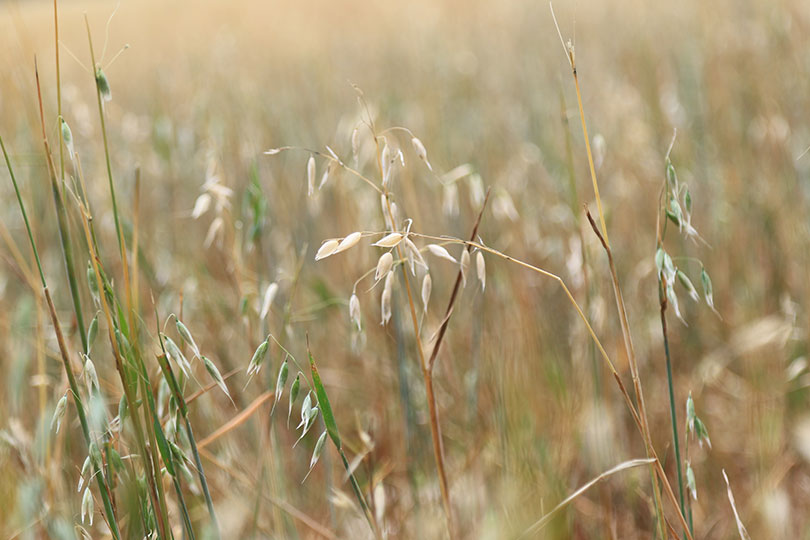Farmers and ranchers will have more flexibilities next year after the U.S. Department of Agriculture’s (USDA) Risk Management Agency (RMA) made changes to crop insurance. RMA is making permanent a new provision that allows farmers and ranchers to hay, graze or chop cover crops and still receive a full prevented planting payment.
To accommodate the different farming practices across the country, RMA is also increasing flexibility related to the prevented planting “1 in 4” requirement, as well as aligning crop insurance definitions with USDA’s National Organic Program.
Haying, grazing and chopping cover crops
In July, RMA announced farmers can hay, graze or chop cover crops for silage, haylage or baleage at any time and still receive 100% of the prevented planting payment. Previously, cover crops could only be hayed, grazed or chopped after Nov. 1. Otherwise, the prevented planting payment was reduced by 65% if farmers took those actions on the cover crop.
RMA added this flexibility starting with the 2021 crop year as part of a broader effort to encourage farmers and ranchers to use cover crops, an important conservation and good farming practice. Cover crops are especially important on fields prevented from being planted because they cover ground that would otherwise be left bare, which helps reduce soil erosion, boost soil health and increase soil carbon sequestration.
This change builds on the advanced research and identified benefits cover crops have supporting healthy soils and cropland sustainability efforts. Studies also show that cover crops provide increased corn and soybean yields. While results vary by region and soil type, cover crops are proven to reduce erosion, improve water quality and increase the health and productivity of the soil while building resilience to climate change. RMA also provided a premium benefit to farmers who planted cover crops through the Pandemic Cover Crop Program to help farmers maintain cover crop systems amid the financially challenging pandemic.
“1 in 4” requirement flexibilities
For the 2020 crop year, RMA implemented a policy stating that for land to be eligible for prevented planting coverage, the acreage must meet the “1 in 4” requirement, which means the land must be planted, insured and harvested in at least one of the four most recent crop years. Now, RMA is adding flexibilities to recognize different farming practices and crops grown, as well as the availability of risk management options.
New flexibilities allowed in order to meet the “1 in 4” requirement include:
- The annual regrowth for an insured perennial crop, such as alfalfa, red clover, or mint, to be considered planted.
- Allow a crop covered by the Noninsured Crop Disaster Assistance Program (NAP) to meet the insurability requirement.
- If crop insurance or NAP coverage was not available, allow the farmer to prove the acreage was planted and harvested using good farming practices in at least two consecutive years out of the four previous years to meet the insurability requirement.
Aligning organic terms
RMA is revising four organic definitions to be consistent with USDA’s National Organic Program. Consistency across USDA programs is important to eliminate the potential for confusion between the various programs that USDA is committed to providing to farmers.
This change builds on other RMA efforts to expand and improve current options for organic farmers. In Sept. 2021, RMA announced several updates to Whole-Farm Revenue Protection (WFRP), including increasing farm operation growth limits for organic farmers to the higher of $500,000 or 35% over the five-year average allowable income, and to allowing a producer to report acreage as certified organic, or as acreage in transition to organic, when the farmer has requested an organic certification by the acreage reporting date.
In addition, RMA announced it will be offering the new Micro Farm policy through WFRP that specifically targets coverage for small, diversified farmers, including organic growers.
Other changes
RMA made other changes to Common Crop Insurance Policy Basic Provisions, Area Risk Protection Insurance Regulations, Coarse Grains Crop Insurance Provisions and other insurance provisions.
- RMA is providing an option for farmers to delay measurement of farm-stored production for 180-days through the Special Provisions, similar to flexibilities already available to grain crop farmers.
- RMA added earlage and snaplage as an acceptable method of harvest for coarse grains. During the 2020 derecho, many farmers salvaged their damaged corn crop by harvesting as earlage or snaplage instead of grain or silage.

